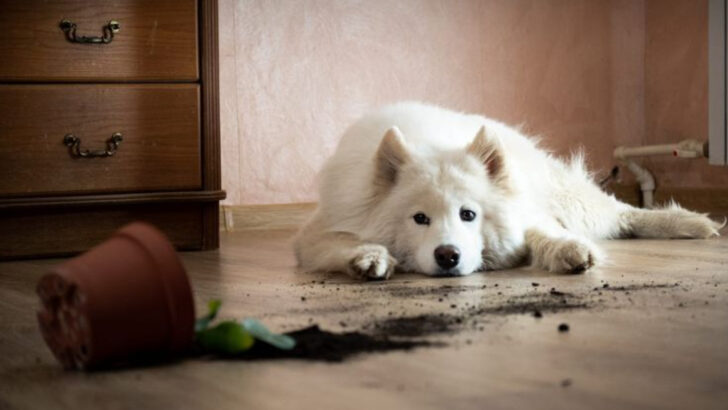Your dog may look calm when you walk out the door—but behind those puppy eyes could be a storm brewing.
Chewed shoes. Barking marathons. Stress so thick, it practically seeps into the couch cushions.
Leaving your dog home alone isn’t just a cute scene from a family movie—it comes with real risks. From safety hazards to emotional meltdowns, your solo pup could be facing way more than boredom.
Before you grab your keys and head out, get the facts. These are the twelve risks every dog owner should have on their radar—and how to outsmart them.
Separation Anxiety
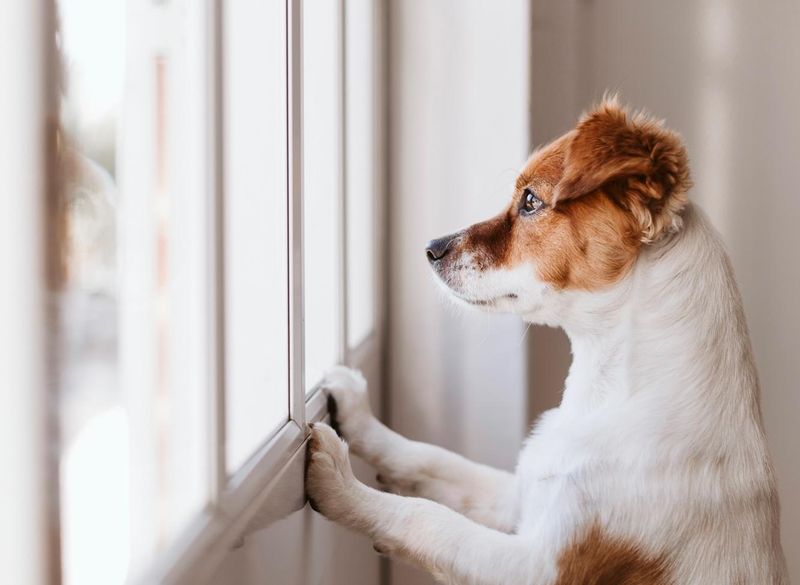
The moment you close the door, your furry friend might experience a wave of panic known as separation anxiety. This condition can cause your dog to feel intense distress, leading to destructive behavior like chewing furniture or scratching doors. Your pup may whine, bark, or pace restlessly, unable to find comfort in solitude.
To ease this anxiety, consider leaving behind a piece of your clothing or a comforting toy. Training and gradual desensitization could also help your dog feel more secure and calm when left alone.
Boredom and Destructive Behavior
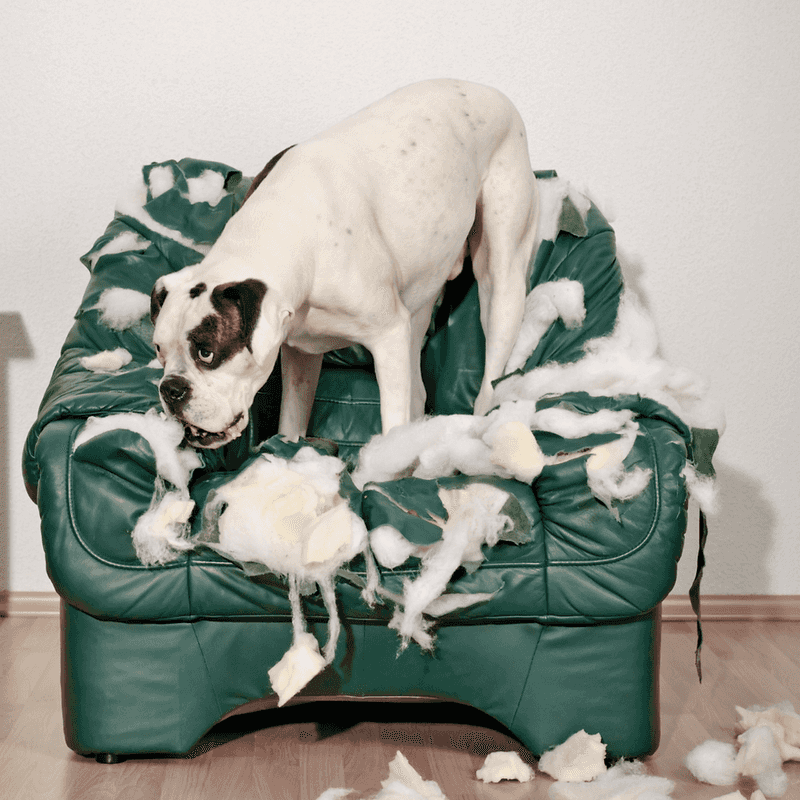
When left alone, dogs can quickly become bored. With no one to play with, your canine companion might resort to entertaining themselves in less than ideal ways. Chewing on shoes, tearing apart cushions, or raiding the trash bin are common signs of boredom.
To prevent such chaos, provide stimulating toys or puzzles that will keep your dog’s mind engaged. Interactive feeders or treat-dispensing toys can be lifesavers, turning your dog’s home-alone time into an enriching experience.
Household Hazards
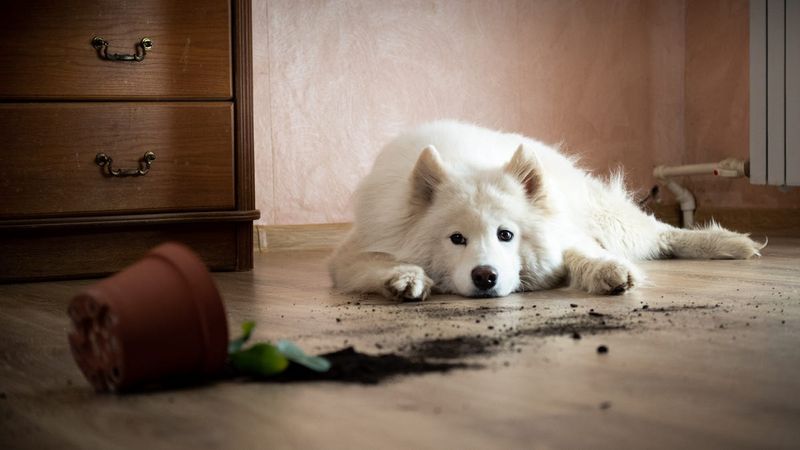
Your home might be a safe haven, but it can also be a minefield of hazards for an unsupervised dog. Curious noses can lead to trouble, especially with exposed wires, cleaning supplies, or small objects. Even an open toilet lid can pose a danger.
Ensure that all potential threats are securely out of reach. Child-proofing your home can double as dog-proofing, safeguarding your pet from the hidden dangers lurking in everyday household items.
Accidental Escapes
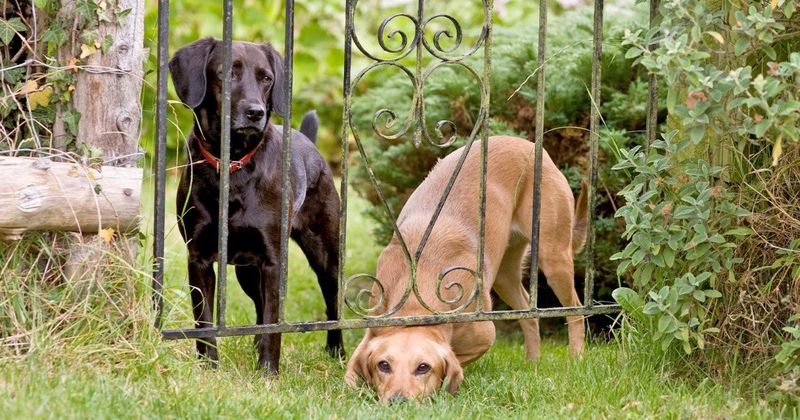
An open door or window can be an invitation for your adventurous dog to explore the world beyond your home. Even well-behaved dogs can succumb to curiosity, leading to accidental escapes that might put them in harm’s way.
Secure all exits and consider installing childproof locks or pet gates. Keeping your pet’s ID tags up-to-date is a wise precaution, ensuring that if they do wander off, they can be safely returned home.
Noise Phobias
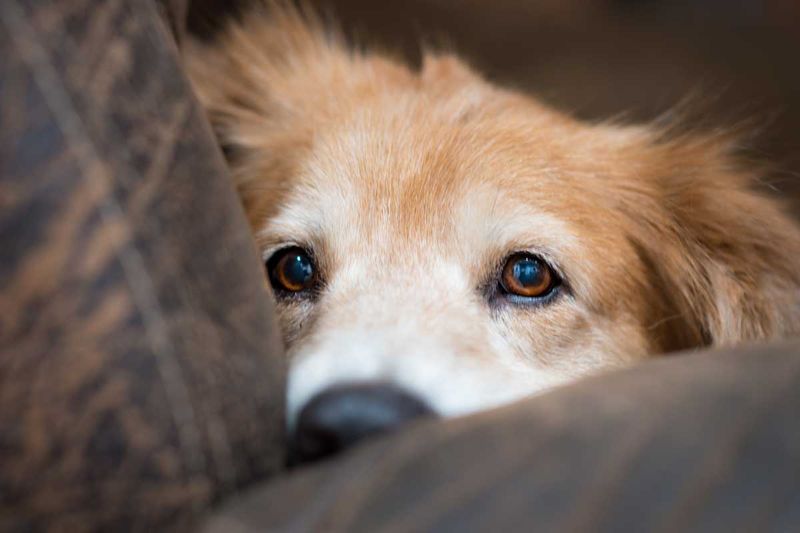
Unexpected noises can wreak havoc on a dog’s nerves. Thunderstorms, fireworks, or even the rumble of a passing truck can trigger noise phobias, causing extreme stress when your pet is home alone.
Creating a safe, quiet space with familiar blankets or white noise can help your dog feel more secure. Sometimes, a simple background radio or calming playlist can make a world of difference, soothing your pet’s anxiety during unsettling noises.
Inadvertent Injury
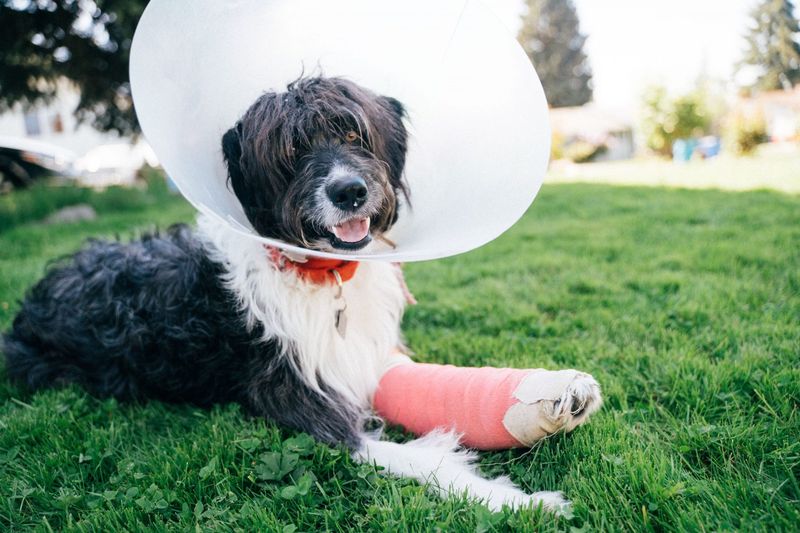
While exploring, dogs might inadvertently hurt themselves. A slip on a slick floor, a tumble from a sofa, or a paw caught in furniture can lead to injury. Without immediate help, a minor mishap might become a serious problem.
To minimize these risks, ensure that slippery surfaces are covered with rugs and that potential hazards are removed. Supervised playtime is ideal, but when leaving your pet alone, take extra precautions to secure their environment.
Choking Hazards

Dogs are curious by nature, and small objects can pose a serious choking risk. Buttons, coins, or toys left on the floor might look like tasty treats to an unsupervised dog.
Always tidy up and remove any small items from your pet’s reach before leaving them alone. Opt for larger, durable toys that are specifically designed for dogs, ensuring they have safe options to chew and play with.
Pacing and Restlessness
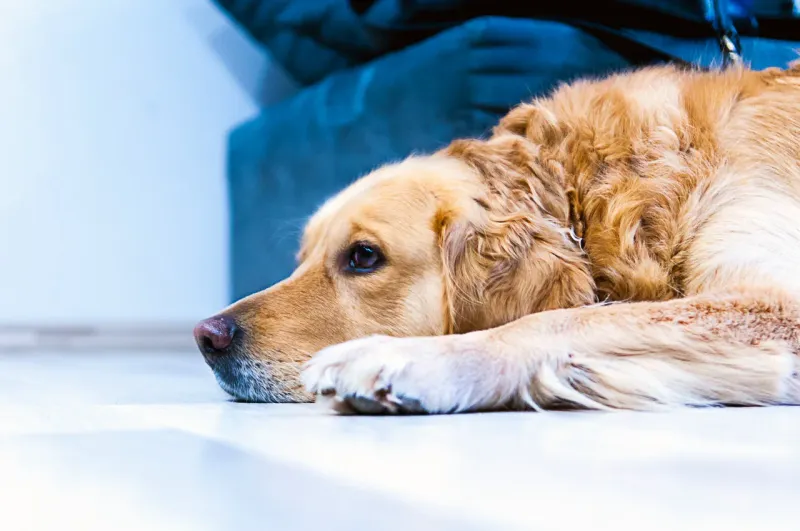
Some dogs may become restless when left alone, pacing back and forth in a state of unease. This behavior can be a sign of stress or anxiety, often resulting from a lack of mental stimulation or companionship.
To help your dog relax, ensure they have access to a comfortable resting spot and consider providing soothing music or a view of the outside world. Engaging toys or a pet camera might also offer some reassurance until you return.
Overeating or Lack of Appetite

Changes in routine can affect a dog’s appetite. Some may overeat when alone out of boredom, while others might lose interest in food altogether due to anxiety. Both scenarios can lead to health issues if not monitored.
To maintain a healthy diet, establish a consistent feeding schedule and avoid leaving food accessible all day. Interactive feeders can also help regulate eating habits, turning mealtime into an engaging activity that distracts from loneliness.
Temperature Extremes
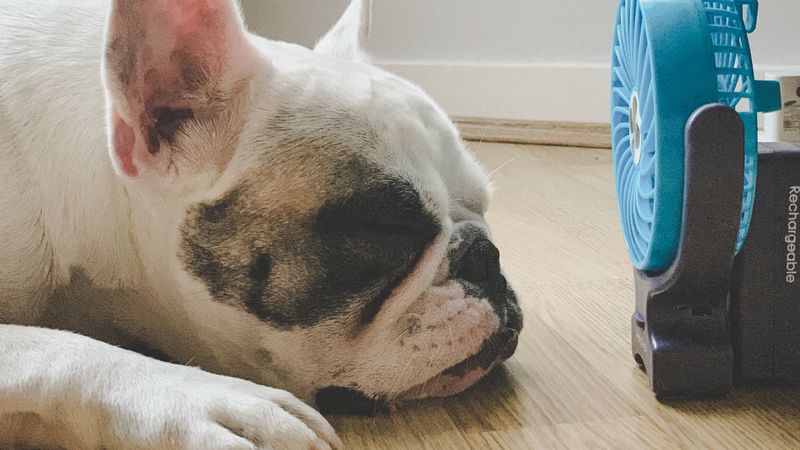
Temperature control is crucial when leaving your dog alone. Extreme heat or cold can pose significant health risks, leading to heatstroke or hypothermia. Dogs left without adequate ventilation or climate control might suffer in silence.
Ensure your home is a comfortable temperature, especially during seasonal extremes. Fans, air conditioning, or heating systems should be used as necessary to keep your pet safe and comfortable while you’re away.
Loneliness and Depression
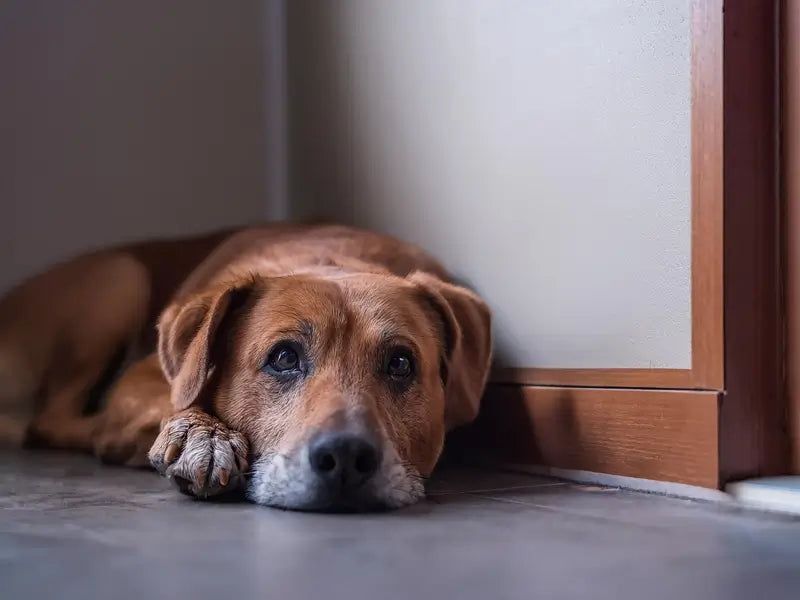
Dogs are social creatures, and extended periods alone can lead to feelings of loneliness or depression. A lack of interaction can make your pet feel isolated, impacting their emotional well-being.
Schedule regular play sessions and consider hiring a dog walker or pet sitter for longer absences. Pet daycare services can also provide valuable socialization, ensuring your dog remains happy and healthy, both mentally and physically.
Lack of Exercise
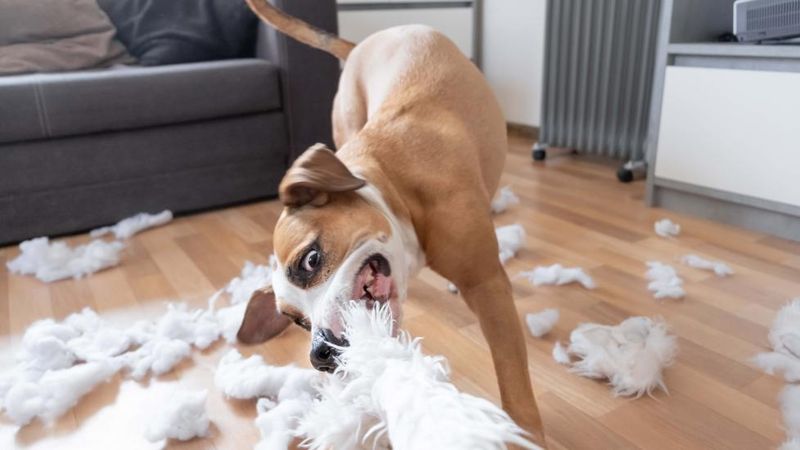
Without regular exercise, dogs can become lethargic and gain weight, leading to a host of health issues. A dog left alone with no outlet for their energy might become frustrated or restless.
Ensure that your pet receives daily walks and playtime to keep them active and healthy. Providing a variety of toys and opportunities for physical activity while you’re away can help maintain their fitness and happiness.

